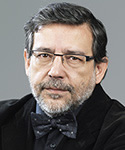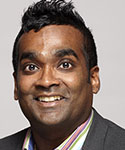The ground for a global approach

Francesc Aragall
President, Design for All Foundation: Spain
The French revolution that proclaimed "Liberté, Egalité, Fraternité" planted the seed for the recognition of human dignity and individual rights.
But we are all aware that in real life the majority of the population can't exercise their rights fully. Poverty, lack of infrastructures, global inequalities, armed conflicts but also lack of awareness and sensibility and cultural stereotypes keeps, even in the so called more developed countries, a big part of the population sees limited its possibilities to fully enjoy what our societies offer.
Reviewing at the history of the movements fighting for human dignity we can identify these commonalities:
Rights:
- To access environments, goods and services necessary for wellbeing.
- To see own individual and collective differences respected.
- To develop own potential personally and in the community.
Obligations:
- To respect and promote the exercise of these rights.
- To preserve the environment for future generations and to conserve biodiversity.
- To devote our capabilities to the development of society.
In my opinion Universal Design, Design for All, Inclusive Design, Human Centred Design, User Centred Design, Conception Universelle, Design d'Utenza Ampliata, etc. are totally aligned with these rights and obligations and brings in practical tools and methods to meet them.
There is a need to unify our efforts regardless how we like to call our approach.
To do it I found that there is a need to develop certain attitudes:
- Empathy (putting oneself in someone else's place).
- To promote collaboration and share development between public, private and people sector as a base for co-creating an innovating society that seeks the common wellbeing.



